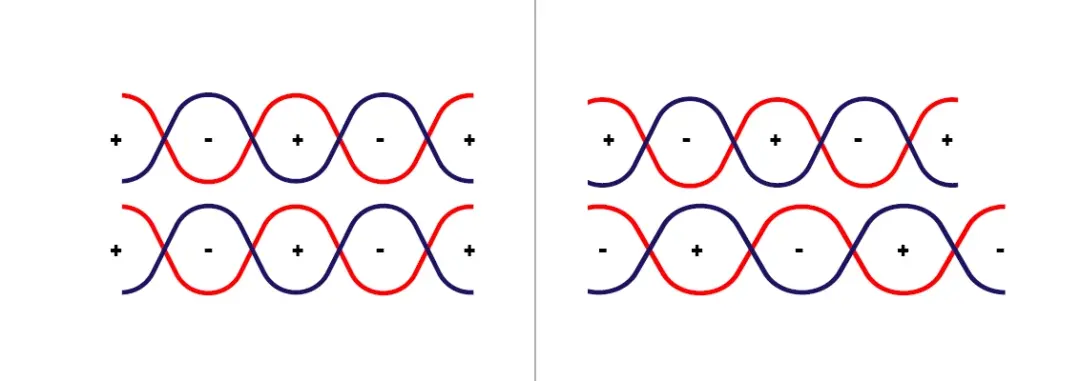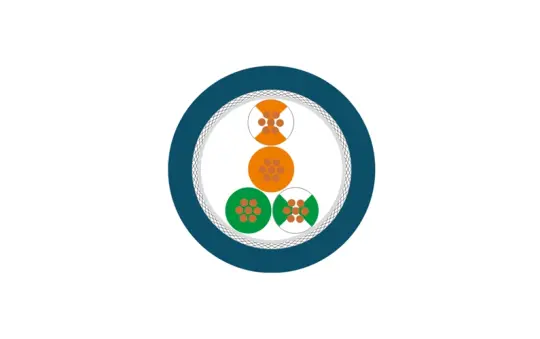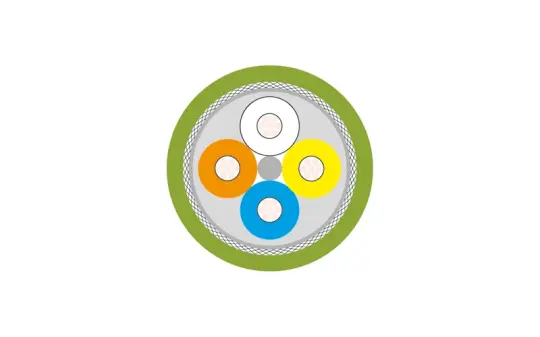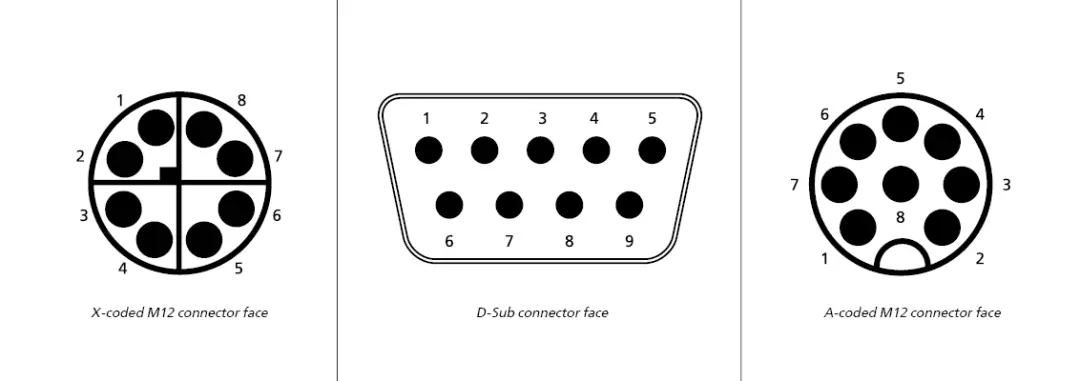Not all data cables are the same. Many users only realize this when they experience data transfer disruptions and errors in their industrial applications. In this article you will learn what the most common mistakes are when selecting an industrial Ethernet or bus cable and how to avoid them.
All cables and wires that contribute in any way to communications are commonly referred to as data cables. However, there are significant differences, such as the completely different structures of copper and fiber optic cables. Copper data cables come in many different types, such as low-frequency cables, coaxial cables, telephone cables, bus cables, various Ethernet systems, or microwave cables for special applications that require transmission in the gigahertz range. Selecting the wrong cable can quickly lead to costly disruptions and errors.
In general, data cables are low capacity cables. This means that as little electrical energy as possible is stored in the cable during data transmission. This electrical energy has a negative effect on signal quality. The capacity partly depends on the insulation material of the cable. Modern bus and Ethernet cables mainly use materials such as PE (polyethylene) or PP (polypropylene), which provide particularly good insulation, which is determined by measuring the dielectric constant (εr). The lower this value, the better the material insulates and the lower the capacity of the cable. This allows thinner insulation to be used with the same dielectric strength.
A comparison of cable insulation materials
| Material | VDE label | Dielectric Constant | Halogen free |
| PVC | Y | 3.6-6 | no |
| PVC +90°C | Yw | 4-6.5 | no |
| P.E | 2Y | 2.3 | yes |
| PE foamed | 02Y | 1.6-1.8 | yes |
| PP | 9Y | 2.3-2.4 | yes |
| PP foamed | 1.6-1.8 | yes | |
| PUR | 11Y | 4-7 | yes* |
| FEP | 6Y | 2.1 | no |
| *Dependent on flame retardants used | |||
Clean data transmission is achieved through proper cable construction. A solid wire, which is perfectly round and has a uniform diameter, provides the best electrical performance. For industrial Ethernet and bus cables, the AWG construction is preferred, because this flexible construction results in a round conductor. Metric cables are not suitable for this application because they have a bonded construction and are not round. This leads to variable capacities that strongly influence data transmission at high frequencies.
Common Mistakes When Selecting Industrial Ethernet and Bus Cables
1. Low-frequency cables for high-frequency applications
Selecting low-frequency cables for high-frequency Ethernet connections is a common cause of data transmission failure. These cables also have low capacitance, but exhibit a different characteristic impedance than what is required by the Ethernet standard. This leads to a mismatch or discontinuity. In low-frequency data cables, all pairs are laid in parallel. This means that all four laying lengths are the same. Ethernet cables used in high-frequency applications must also be optimally decoupled. This is achieved by using four different laying lengths, which are measured individually. The positions of the twisted pairs within the overall construction must also be taken into account.
 Bad disconnection (left) and good disconnection (right)
Bad disconnection (left) and good disconnection (right)
2. Classic twisted pairs instead of a star quad
Many industrial communications standards, such as PROFInet, EtherCAT or SERCOS III, use cables with two twisted pairs twisted into a star-quad for data transmission. All four cores are turned into a perfectly round shape. The advantage of this is that there are no differences in transit time. This is in contrast to classic twisted pairs, where the individual twisted pairs must have two different twisted lengths due to the required decoupling. If the wrong twisted pair cable is used, it can cause problems with transmission and throughput times.

2 Couples
- 4 x Core diameter
- 3 x Stranding
- Pairs according to illustration
- Simple
- Different signal transit times

Star quad
- 2.4 Core diameter
- 1 x Stranding
- Diagonal cores create the electrical pair: white/blue and orange/yellow
- Identical signal transit times
In star quads, the nuclei that are diagonally opposite each other form the electrical pair. If this rule is ignored when connecting the cable, the characteristic impedance and near-end crosstalk (NEXT) of the cable will be changed, which may reduce transmission quality. Even shielded four-core sensor cables are not suitable for use as high-frequency industrial Ethernet or bus cables, despite their construction appearing similar at first glance. The difference is that the core insulation strength is not intended for Ethernet, and the stranding is not perfectly circular in construction. This results in an inadequately functioning cable due to unsuitable characteristic impedance, NEXT and cable attenuation.
3. Too Long Cable or Too Small Diameter
Another classic example is segments that are too long. According to the Ethernet standard, a repeater must be used after a maximum length of 100 meters. This receives the weak signal and retransmits it at full strength. In practice, segments with lengths longer than 100 meters may occur, but these do not meet the applicable standards. In these cases, rising temperatures, aging and other factors can quickly lead to defects or malfunctions. Thinner cables with AWG 26 diameters are limited to 60 – 70 meters. It is important to remember that every plug connection is a lossy connection due to attenuation and reflection, which reduces range.
4. Wrong Plug
It is common for non-standard and untested connectors to be used in Ethernet applications, such as D-Sub or M12 connectors, which are A-coded with an 8-pin design. Although these plugs can transfer data, the quality is significantly reduced due to lower near-end crosstalk (NEXT). The reason for this is the position of the middle pin, which is not in accordance with standards and hinders data transmission.

According to Ethernet standards, permitted connector connections for the best data cables are shielded plugs/sockets:
- RJ45 4-pin (100 Mbit 4-pin)
- RJ45 8-pin (Gbit 8-pin)
- D-coded M8 & M12 (100 Mbit)
- A-coded M8 4-pin (100 Mbit)
- P-coded M12 (100 Mbit)
- X-coded M12 (Gbit)
- Ix Industrial (Gbit)
- Mini IO
- SPE (Single Pair Ethernet)
In addition, there are various standards such as PROFInet, EtherCAT, or SPE (Single Pair Ethernet) that can transfer data and power via one hybrid plug. These comply with IEC standards, have been evaluated by the appropriate organizations, or are in the standardization phase.
Standardized Hybrid Ethernet Plugs:
- M8 SPE according to IEC 63171-6
- M12 SPE according to IEC 63171-7
- Y-coded M12 according to IEC 61076-2-113
- M23 according to IEC 61076-2-117
- RJ45 Hybrid according to IEC 61076-3-106
- Ix Industrial according to IEC 61076-3-124
Some plug manufacturers have their own hybrid solutions in their portfolio that are not standardized but have been tested and evaluated for Ethernet compliance. As a basic principle, it is always recommended to stick to standardized and evaluated Ethernet plug connections.
Important points to remember:
When selecting data cables for industrial applications, users must adhere to appropriate standards to avoid interference and defects. Users should also pay attention to the lengths of the individual segments, the number of plugs, and the different diameters of installation and patch cables. In addition, aging of individual components can lead to a decrease in transmission quality and interruptions in the long term. With 45 years of experience, HELUKABEL is an expert in connection technology and is ready to support users in finding the perfect industrial Ethernet or bus cables for their application.